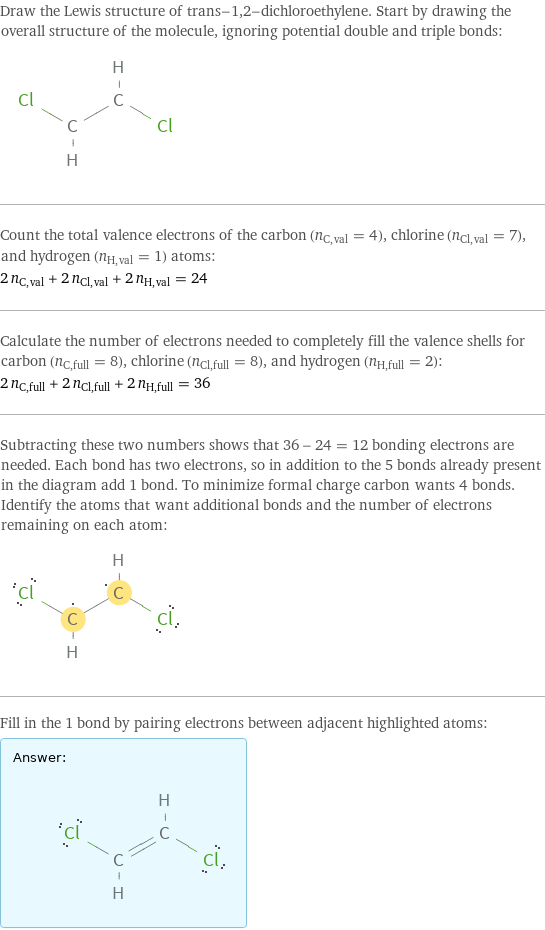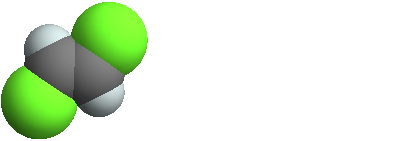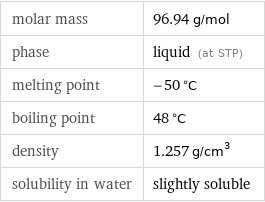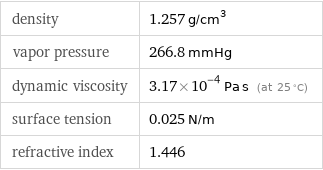Input interpretation

trans-1, 2-dichloroethylene
Chemical names and formulas

formula | ClCH=CHCl Hill formula | C_2H_2Cl_2 name | trans-1, 2-dichloroethylene IUPAC name | (E)-1, 2-dichloroethylene alternate names | (E)-1, 2-dichloroethene | (E)-1, 2-dichloroethylene | trans-1, 2-dichloroethene | trans-acetylene dichloride | trans-dichloroethylene mass fractions | C (carbon) 24.8% | Cl (chlorine) 73.1% | H (hydrogen) 2.08%
Lewis structure

Draw the Lewis structure of trans-1, 2-dichloroethylene. Start by drawing the overall structure of the molecule, ignoring potential double and triple bonds: Count the total valence electrons of the carbon (n_C, val = 4), chlorine (n_Cl, val = 7), and hydrogen (n_H, val = 1) atoms: 2 n_C, val + 2 n_Cl, val + 2 n_H, val = 24 Calculate the number of electrons needed to completely fill the valence shells for carbon (n_C, full = 8), chlorine (n_Cl, full = 8), and hydrogen (n_H, full = 2): 2 n_C, full + 2 n_Cl, full + 2 n_H, full = 36 Subtracting these two numbers shows that 36 - 24 = 12 bonding electrons are needed. Each bond has two electrons, so in addition to the 5 bonds already present in the diagram add 1 bond. To minimize formal charge carbon wants 4 bonds. Identify the atoms that want additional bonds and the number of electrons remaining on each atom: Fill in the 1 bond by pairing electrons between adjacent highlighted atoms: Answer: | |
3D structure

3D structure
Basic properties

molar mass | 96.94 g/mol phase | liquid (at STP) melting point | -50 °C boiling point | 48 °C density | 1.257 g/cm^3 solubility in water | slightly soluble
Units

Liquid properties (at STP)

density | 1.257 g/cm^3 vapor pressure | 266.8 mmHg dynamic viscosity | 3.17×10^-4 Pa s (at 25 °C) surface tension | 0.025 N/m refractive index | 1.446
Units
